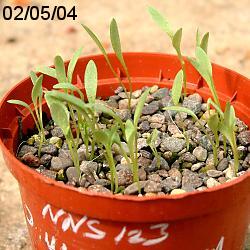
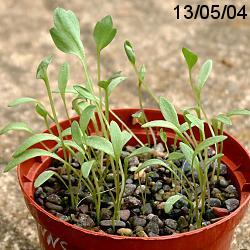
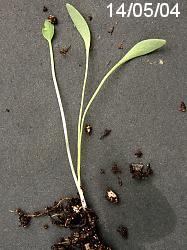
| Return to American Species Contents List |
| North American Delphinium Species |
D. uliginosum, also known as the swamp larkspur, is a very distinctive delphinium notable for the very unusual fan-shaped leaves. It has a very local distribution in inland areas of California to the northeast of San Francisco along streams across serpentine (a magnesium silicate rock), among chaparral and in grassland at altitudes of 400 -600m.
Seeds obtained from Northwest Native Seeds were sown in early February 2004 on the surface of peat-based multi-purpose compost and covered with a thin layer of grit. The pot was then left outdoors exposed to the weather. Germination began in late March. Seedlings have long slender seed leaves that taper into their long stalks, as can be seen in the pictures below. True leaves emerged from the compost surface in early May and these appear to develop from a point on the stalk below where the cotyledon stalks diverge.
 |
 |
 |
Seedlings pricked out into individual pots in May developed a number of leaves but then either became dormant or died. Surviving plants started into growth in the following March and were repotted in April. At this stage it could be seen that new stems were emerging from a tickened root. These plants then developed a substantial basal rosette of the curious, rather fleshy and fan-shaped grey-green leaves characteristic of the species.
|
|
Almost leafless flower stems with a terminal cluster of buds then emerge from the basal rosette of leaves and grow to 20 - 30cm or more in height.
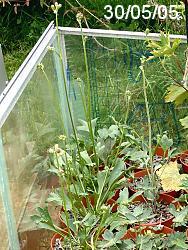 |
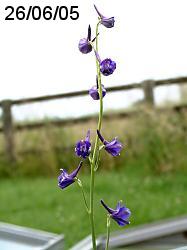 |
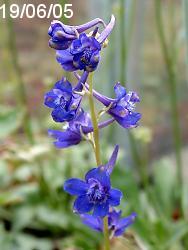 |
The flowers with long spurs pointing skywards were widely spaced in a short spike. According to the description of this species in the Flora of North America, the flowers should have deep blue sepals but several of the plants grown had flowers with sepals in a paler lilac shade.
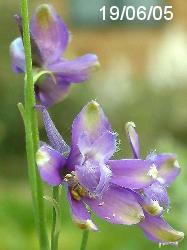 |
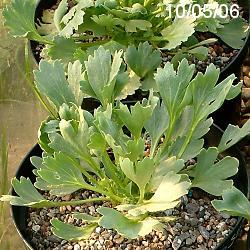 |
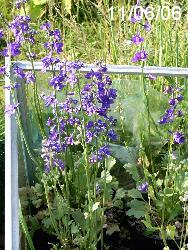 |
Plants surviving to 2006 developed a much larger basal rosette of leaves and produced several flower stems. In the extremely hot conditions as the plants approached flowering in June it proved difficult to maintain the correct level of soil moisture and several plants seemed to suffer root rot. It is possible that flower colour is also affected by deficiencies in the nutrient levels in the potting compost.
| Return to American Species Contents List |
| Return to Species cover page |